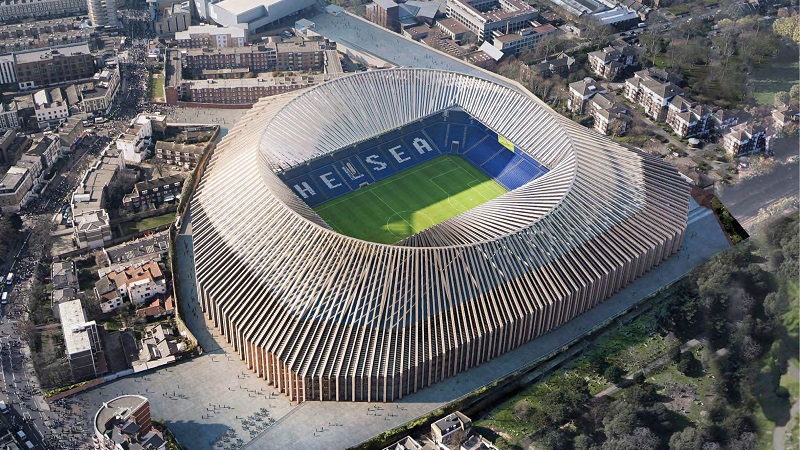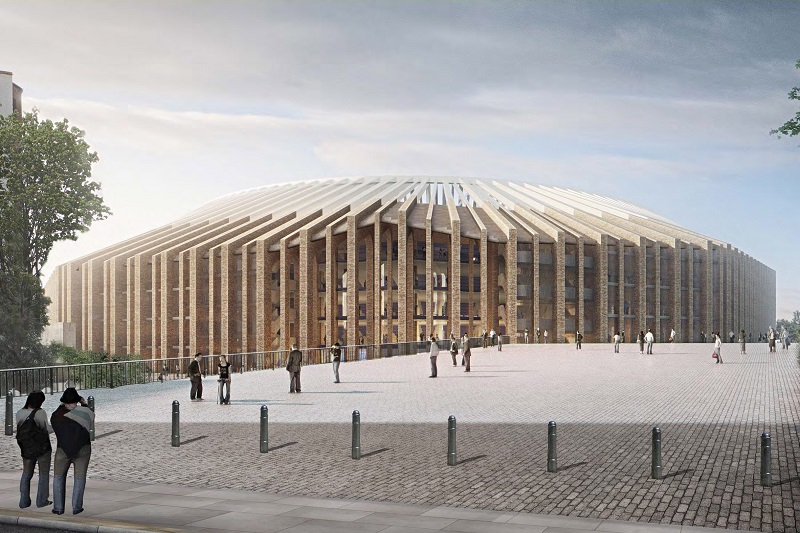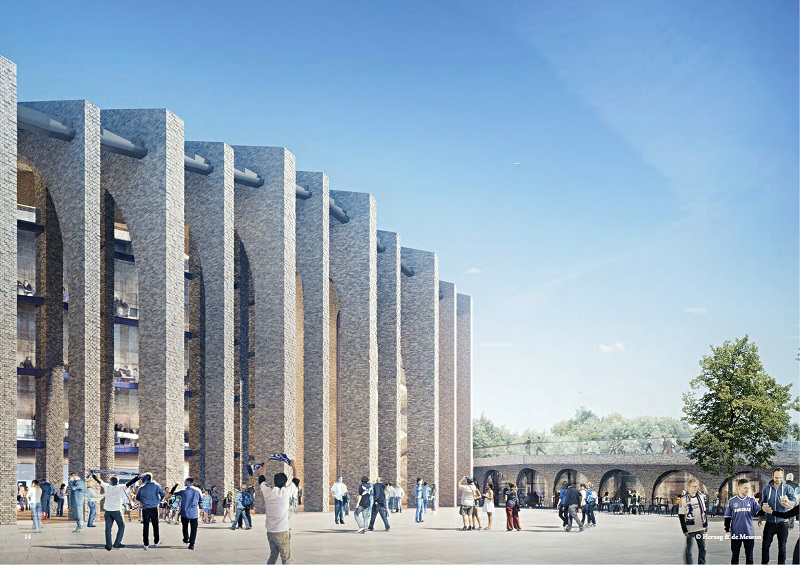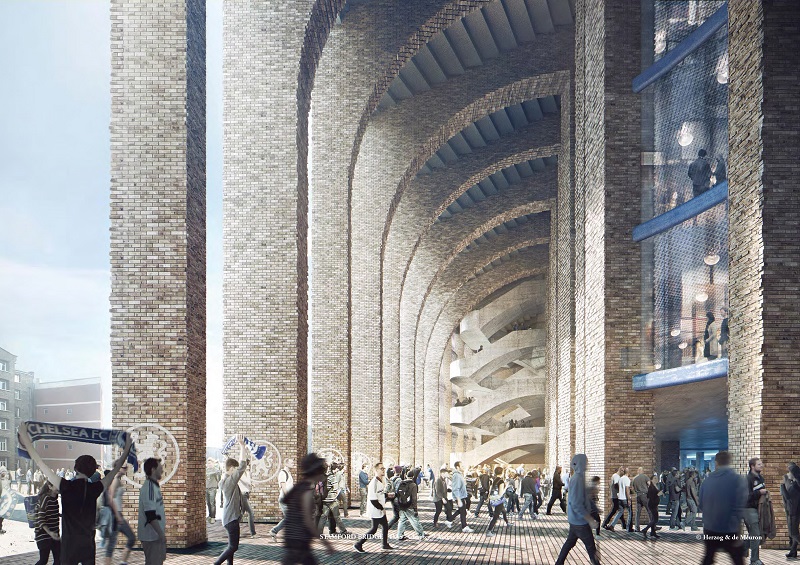Stamford Bridge stadium
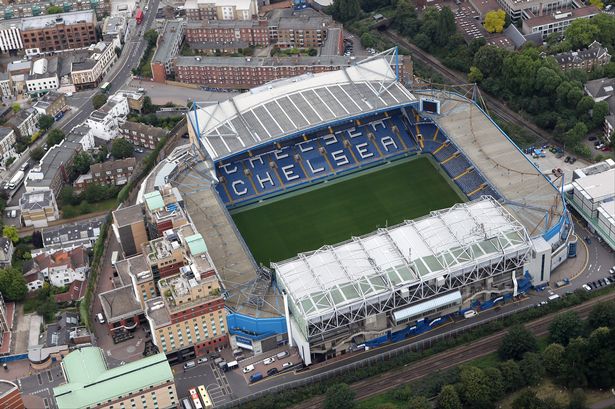 Stamford Bridge was built in 1876 and initially used for athletics, before becoming the home ground of Chelsea F.C. in 1905.
Stamford Bridge was built in 1876 and initially used for athletics, before becoming the home ground of Chelsea F.C. in 1905.
Redevelopment was of the stadium site was proposed in 2014, with several options explored, before a decision was made to revamp the existing stadium. Herzog & de Meuron, who previously designed the famous Beijing National Stadium, were appointed as architects.
The central features of the redevelopment, which was designed in collaboration with London-based architectural practice Lifschutz Davidson Sandilands, were the 264 brick piers, intended to completely encase the existing stadium, supporting a steel ring above the pitch, creating additional space for spectators, and increasing the capacity from 41,837 to 60,000.
The concept behind the brick pillars was to make the stadium more ‘at home’ with the brick architecture of the local area. It has been described as a ‘high-quality piece of design and a unique architectural solution… It would have the landmark qualities of a significant sporting venue with a clear identity, and would declutter and unify the site.’
In January 2017, planning permission was granted by the London Borough of Hammersmith and Fulham, and the £500 million project had been expected to be complete by 2021.
However, on 31 May 2018, Chelsea FC announced that they were putting the revamp plans on hold indefinitely.
In a statement they said that; 'no further pre-construction design and planning work will occur. The club does not have a timeframe set for reconsideration of its decision. The decision was made due to the current unfavourable investment climate.'
There was speculation that the decision was related to ongoing problems with the UK visa of Chelsea owner Roman Abramovich who has recently taken Israeli citizenship. It is thought that Abramovich's uncertainty over his access to the country may have influenced his decision to put the stadium work on hold.
Images © 2016, Herzog & de Meuron Basel.
[edit] Related articles on Designing Buildings Wiki
Featured articles and news
RTPI leader to become new CIOB Chief Executive Officer
Dr Victoria Hills MRTPI, FICE to take over after Caroline Gumble’s departure.
Social and affordable housing, a long term plan for delivery
The “Delivering a Decade of Renewal for Social and Affordable Housing” strategy sets out future path.
A change to adoptive architecture
Effects of global weather warming on architectural detailing, material choice and human interaction.
The proposed publicly owned and backed subsidiary of Homes England, to facilitate new homes.
How big is the problem and what can we do to mitigate the effects?
Overheating guidance and tools for building designers
A number of cool guides to help with the heat.
The UK's Modern Industrial Strategy: A 10 year plan
Previous consultation criticism, current key elements and general support with some persisting reservations.
Building Safety Regulator reforms
New roles, new staff and a new fast track service pave the way for a single construction regulator.
Architectural Technologist CPDs and Communications
CIAT CPD… and how you can do it!
Cooling centres and cool spaces
Managing extreme heat in cities by directing the public to places for heat stress relief and water sources.
Winter gardens: A brief history and warm variations
Extending the season with glass in different forms and terms.
Restoring Great Yarmouth's Winter Gardens
Transforming one of the least sustainable constructions imaginable.
Construction Skills Mission Board launch sector drive
Newly formed government and industry collaboration set strategy for recruiting an additional 100,000 construction workers a year.
New Architects Code comes into effect in September 2025
ARB Architects Code of Conduct and Practice available with ongoing consultation regarding guidance.
Welsh Skills Body (Medr) launches ambitious plan
The new skills body brings together funding and regulation of tertiary education and research for the devolved nation.
Paul Gandy FCIOB announced as next CIOB President
Former Tilbury Douglas CEO takes helm.
UK Infrastructure: A 10 Year Strategy. In brief with reactions
With the National Infrastructure and Service Transformation Authority (NISTA).






